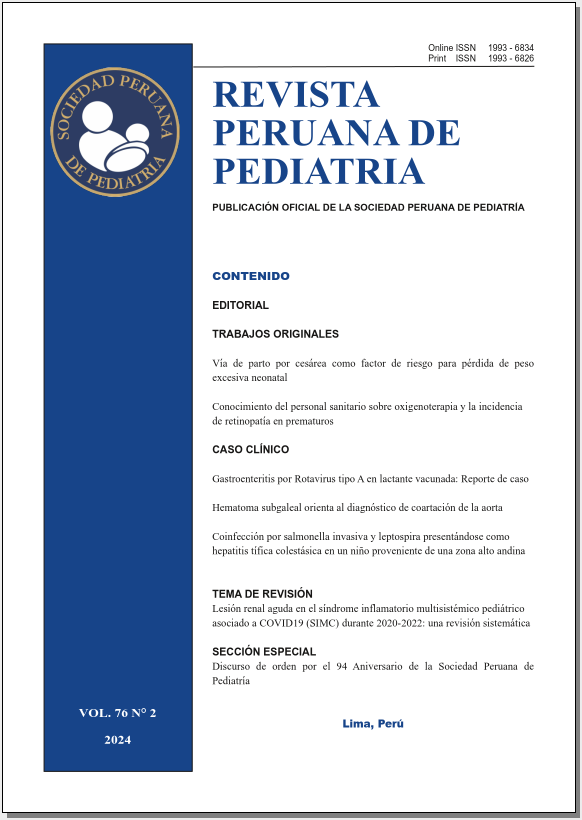Subgaleal hematoma leads to the diagnosis of aortic coarctation
Keywords:
subgaleal hematoma, aortic coarctation, hypertensionAbstract
Subgaleal hematoma (SGH) consists of a collection of blood in the space between the periosteum and the aponeurosis of the scalp. It is characterized by an epicranial extension beyond the sutures. It predominantly appears in newborns related to birth trauma, although it has also been described in older children related to trauma and other triggers. This clinical case presents a 5-year-old girl with a history of a minor trauma, without coagulation disorders, and with an extensive subgaleal hematoma. Surgical drainage of the hemorrhagic collection was performed, with subsequent re-bleeding. During observation in the emergency department, persistently high blood pressure was noted, with a pressure difference between the upper and lower extremities. Additional tests were conducted, and a diagnosis of aortic coarctation was made. Most congenital heart defects are diagnosed in the neonatal period or even in utero, although some are overlooked and diagnosed late in childhood. Aortic coarctation (CoA) represents 5-8% of all congenital heart defects. Delay in diagnosis can lead to serious complications. Intracranial hemorrhage secondary to intracranial aneurysms, left ventricular hypertrophy, and subsequent congestive heart failure can also be observed in adult patients with undiagnosed CoA. Less common cases of epistaxis and gastrointestinal hemorrhage have also been described. It is unclear whether hypertension could have played a relevant role in the bleeding in this case.
Downloads
Downloads
Published
How to Cite
Issue
Section
Categories
License
Copyright (c) 2024 Beatriz Tesoro, Pilar Storch-De-Gracia, Isabel Rozas, Francesco Ecclesia

This work is licensed under a Creative Commons Attribution 4.0 International License.
Authors will retain the copyright and grant the right to publish their work in the journal while allowing third parties to share it under the Creative Commons Attribution license.
Articles are published under a Creative Commons license that allows sharing and adaptation with appropriate credit. CC BY 4.0 license. Available in English at https://creativecommons.org/licenses/by/4.0/
Authors may use other information disclosure formats as long as the initial publication in the journal is cited. The dissemination of the work through the Internet is recommended to increase citations and promote academic exchanges.
The published content does not necessarily reflect the specific point of view of the journal, and the authors assume full responsibility for the content of their article.



